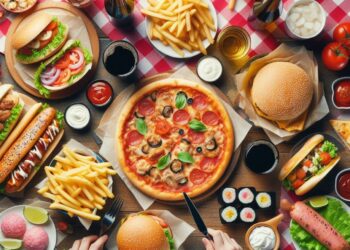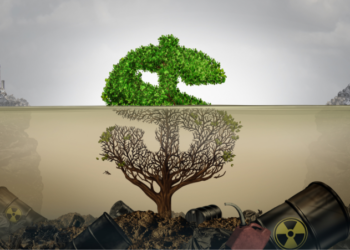Can you imagine the presence of microplastics in the placenta? The research conducted in 2020 witnessed the realisation of this horrible imagination when microplastics were found in 4 out of 6 human placenta samples analysed under Raman Micro spectroscopy. These tiny particles are ubiquitous like plastics as traces are found in every ecosystem ranging from the hot tropics to freezing Polar regions and even 1,968 feet below the surface of Pacific Ocean. Microplastics have gained the attention some decades back though they are in the environment since the advent of plastics. Scientists are labelling the present era as “Plasticine Age” due to the omnipresence of plastics and microplastics.
What are Microplastics?
In 2004, a marine scientist Richard Thompson observed the pile of rice sized plastic particles above the tideline of an English beach and coined the term “Microplastics.” These insoluble solid particles of size less than 5 millimetre and more than 1 micrometre vary in shape, density, and composition. The primary source of origin is polystyrene and polypropylene particles used in cosmetic and medical products. Secondary source of origin is the fragmentation of plastics due to physical, chemical, or biological processes.
How Microplastics enter inside living organisms?
Microplastics can enter the body through ingestion, inhalation, and contact through skin. We are using plastics for packaging and storing of food items but as per report from World Health Organisation, we are also ingesting it through fruits and vegetables as evidence suggests the presence of microplastics in soil and water. The second entry route is inhalation; these particles though invisible to naked eye but are suspended in the environment. Another point of entry is through skin when we use cosmetics and medical products that contain microplastics.
The potential of harm?
The physical impact caused by microplastics is related to shape, size, and concentration of the particles whereas the chemical impact is considered to be more fatal and complex to understand. The chemical impact is further classified under two categories:
Additives used in plastics such as Bisphenol A, phthalates, and some brominated flame retardants are known to be potential endocrine disruptors and harmful pollutants. Endocrine disruptors have the ability to mimic natural hormones and interfere in the metabolic as well as reproductive system of human-beings.
The large surface area and hydrophobic nature of microplastics makes them a perfect surface for adsorbing the micro-organisms as well as harmful chemicals from the surroundings which when inhaled; pose the risk of lung inflammation.
A research paper published in 2021 provides depressing insights about the toxic effects of microplastics on human health. The major impacts enlisted are inflammation, oxidative stress and apoptosis, and metabolic homeostasis.
Apart from human beings, marine life has been the favourite research area with regard to microplastics pollution. They interfere with the larval growth and development, feeding behaviour and fertility of aquatic invertebrates. Research conducted on the physical and toxicological effects of microplastics on fish species has provided the evidence of physiological stress, endocrine dysfunction, and a negative impact on fertility of both male and female fishes.
Terrestrial and aquatic food chains are polluted with microplastics and they are bioaccumulating and biomagnifying with every bite of food we take and with every phytoplankton eaten by a small fish or zooplankton.
Where do we stand?
During the pandemic year (2020), approximately 367 million metric tonnes of plastic was manufactured and it is estimated to triple by 2050. We cannot immediately stop the use of plastics by implementation of a magical law but we can regulate it. Humans created the mess of plastics with the intention to make their lives convenient but we need to join hands so that our life does not become inconvenient at the hands of our very own miraculous invention.
In 2014, Netherlands became the first country to ban the use of microbeads in cosmetics and other countries such as Canada, France, New Zealand, Sweden, and United Kingdom have followed the footsteps. The prevalence of plastics in our daily life requires the alternatives and dedication to put efforts. We can observe our daily activities and replace plastic carry bags with cloth bags, plastic containers with steel or glass containers, standard toothbrush with wooden toothbrush.
Many small changes can be adopted step by step to phase out plastics from our daily life; if not phasing out, at least decreasing the consumption to some extent. It requires the joint efforts of people, pressure groups, governments, and International Organisations working for the protection of environment. The theme for World Environment Day 2023 is “Beat Plastic Pollution” and hopefully it will pave the realistic way to actually beat the plastic pollution in the coming years.









